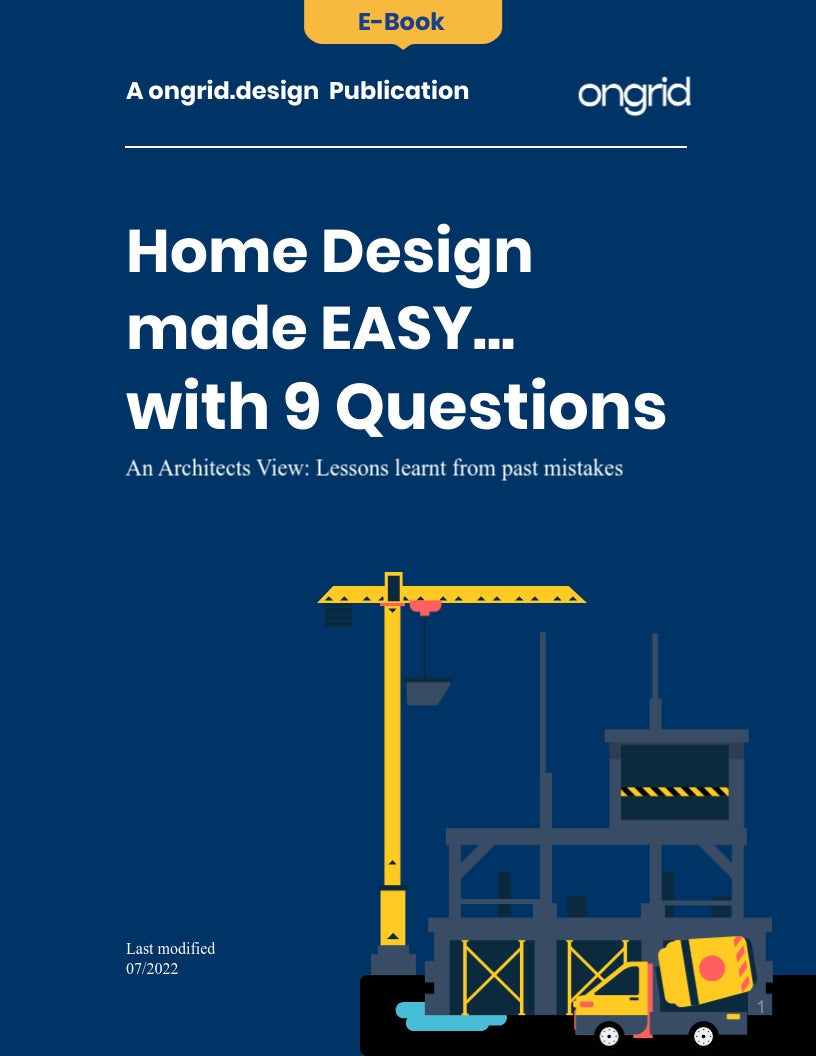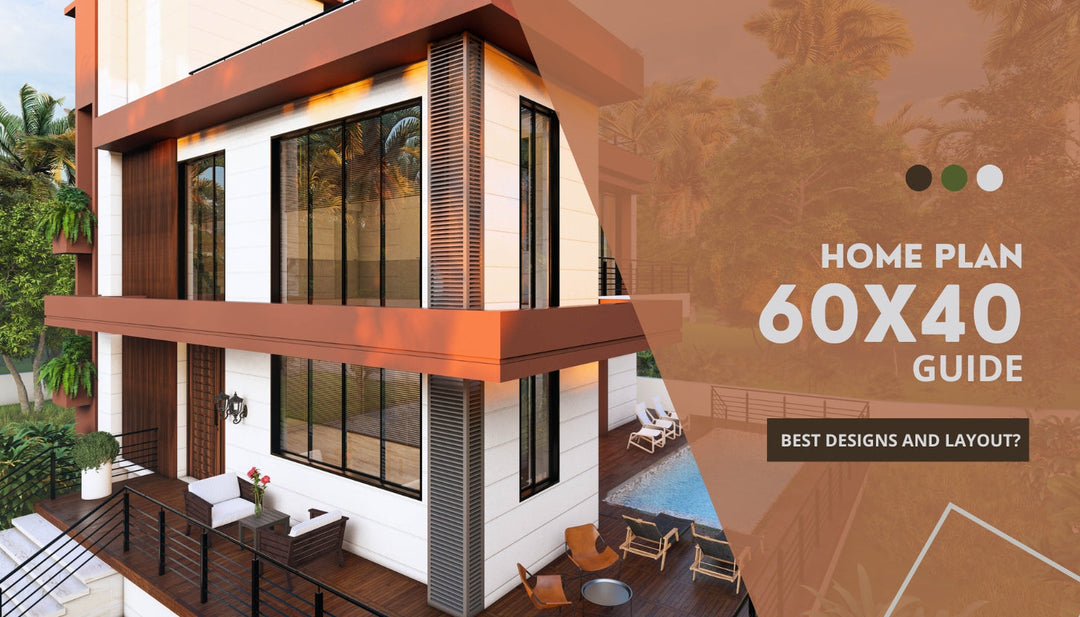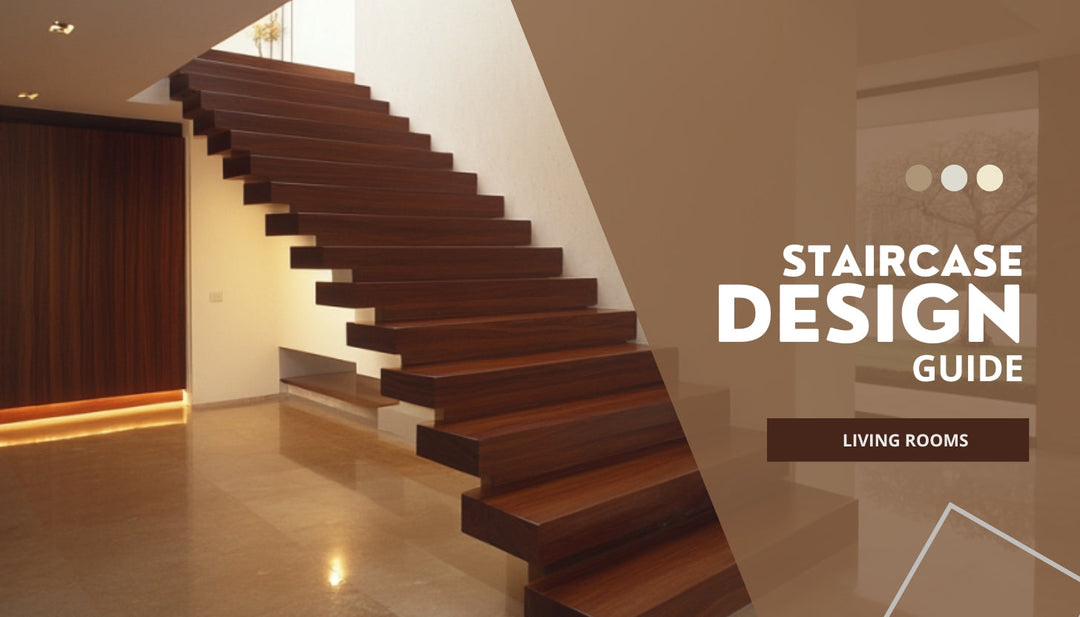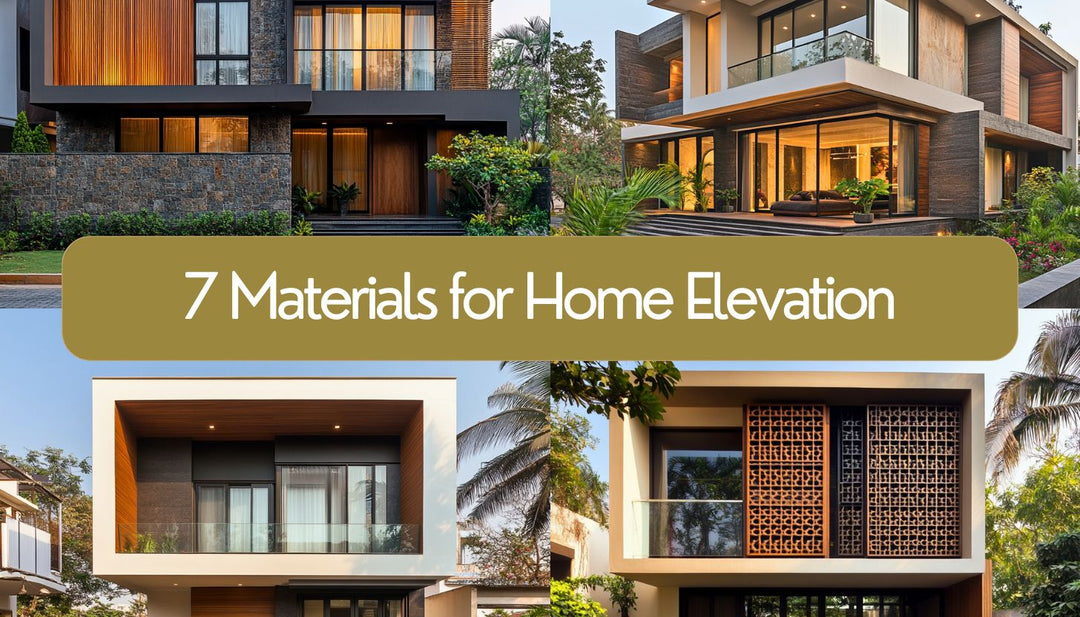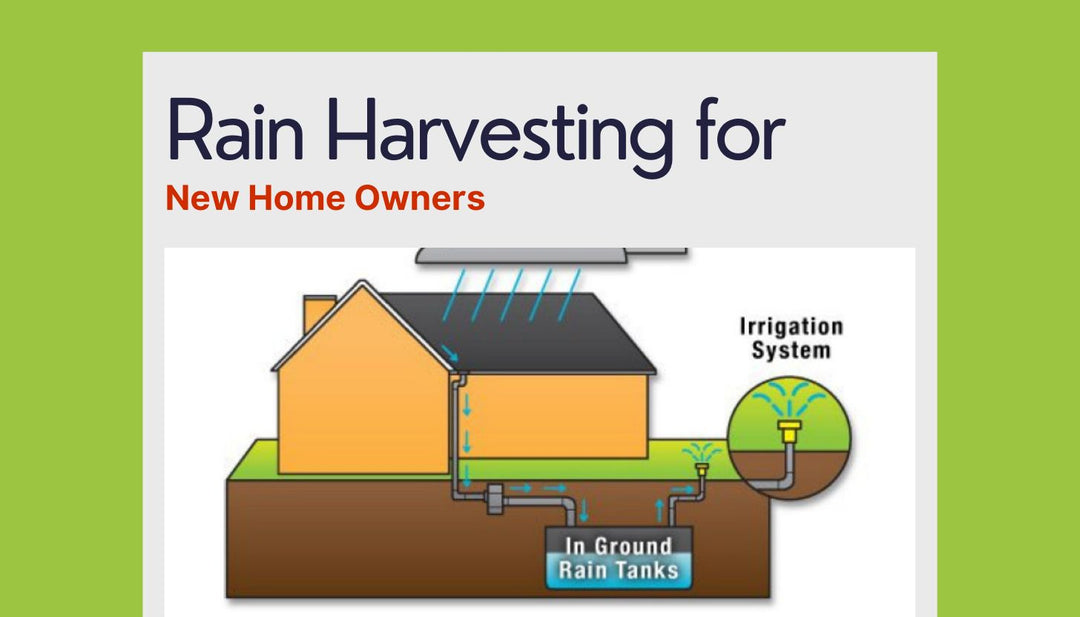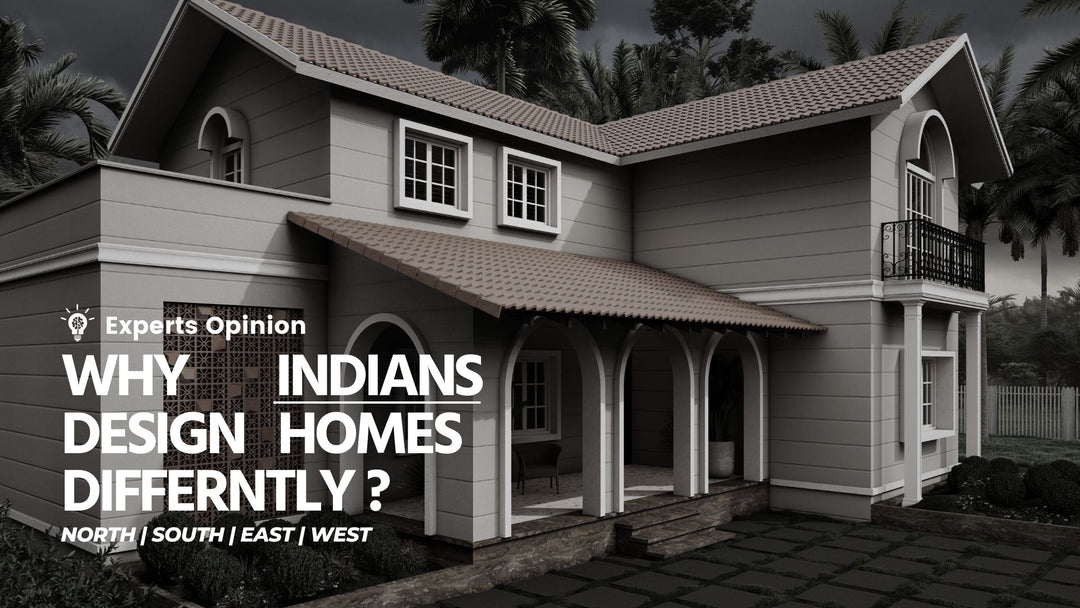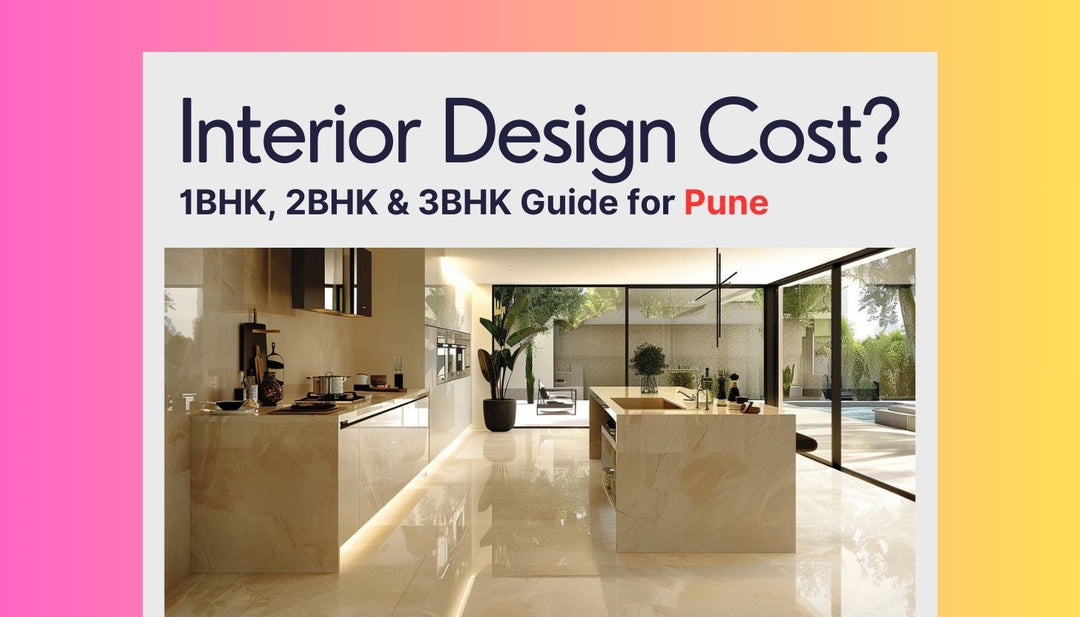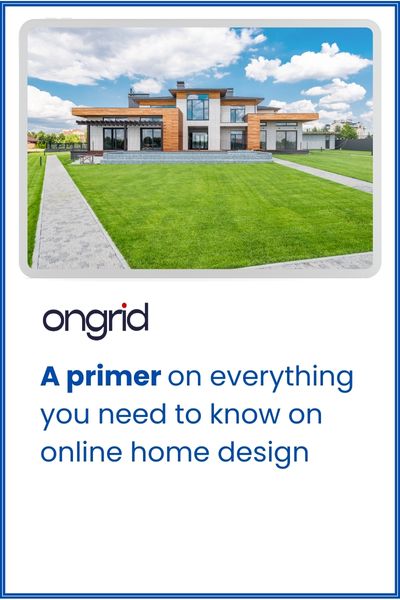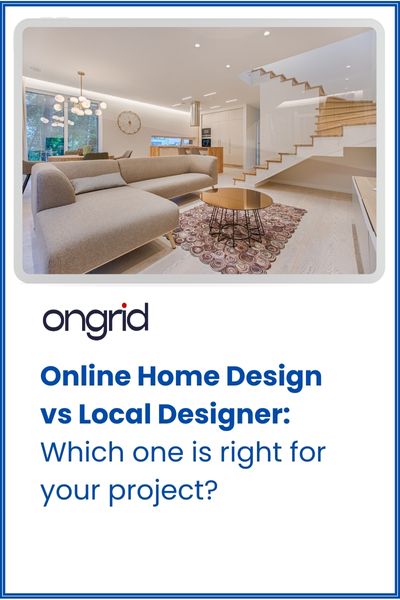Expert Guide to Choosing the Best Materials for Stunning Home Elevations

Key Takeaways:
- Consider climate resilience, maintenance requirements, energy efficiency, cost, aesthetic versatility, and environmental impact when choosing elevation materials.
- Popular materials include paint, textured plaster, concrete, brick, wood, stone, and metal, each with unique advantages and disadvantages.
- Regular maintenance is crucial for preserving the appearance and functionality of your home's exterior.
- Modern manufacturing techniques have improved the performance and sustainability of traditional materials.
- Mixing materials and incorporating sustainable options are current trends in exterior design.
- The best choice depends on your specific climate, budget, and design preferences.
The exterior of your home is more than just a facade; it's a statement of style, a shield against the elements, and a significant factor in your property's value. At Ongrid Design, we understand that selecting the right materials for your home's elevation is a crucial decision that balances aesthetics, durability, and functionality. This comprehensive guide will delve into the best materials for home elevations, helping you make an informed choice that aligns with your vision and practical needs.
Key Considerations When Choosing Elevation Materials

Before we explore specific materials, let's consider the primary factors that should influence your decision:
- Climate resilience
- Maintenance requirements
- Energy efficiency
- Cost (initial and long-term)
- Aesthetic versatility
- Environmental impact
Keep these factors in mind as we examine each material option. For a more in-depth look at how climate affects your choices, check out our guide on climate strategies for home elevations.
1. Wall Paint: The Versatile Canvas

Wall paint remains a popular choice for its versatility and cost-effectiveness. However, it's essential to understand its full potential and limitations.
Advantages:
- Unlimited colour options
- Easy to change and update
- Relatively inexpensive
- It can be applied over various surfaces
Disadvantages:
- Requires regular maintenance
- Less durable than other options
- Limited texture options
Maintenance Tips:
- Clean surfaces annually with a gentle detergent solution
- Repaint every 5-7 years, depending on exposure
- Address any cracks or peeling promptly to prevent moisture damage
Design Science:
Modern exterior paints often include UV-resistant and weather-resistant properties. Some even offer thermally reflective qualities, potentially reducing your home's heat absorption. For inspiration on colour combinations, visit our outdoor home paint colour combinations guide.
User Benefit:
Paint allows for easy customisation and quick style updates without significant investment.
2. Textured Plaster: Adding Depth and Character

Textured plaster offers a unique, tactile finish that can dramatically enhance your home's visual appeal.
Advantages:
- Customisable textures and patterns
- Excellent for creating a Mediterranean or rustic look
- Good weather resistance when properly sealed
Disadvantages:
- Requires skilled application
- It can be more expensive than paint
- Difficult to change once applied
Maintenance Tips:
- Inspect annually for cracks or damage
- Clean with a soft brush and mild detergent
- Reapply sealant every 3-5 years
Design Science:
Textured plaster can help diffuse light and create interesting shadow patterns, adding visual interest to your home's exterior.
User Benefit:
Provides a unique, high-end look that sets your home apart from others in the neighborhood.
3. Concrete: Modern Minimalism Meets Durability

Concrete has evolved from a purely functional material to a stylish choice for contemporary home designs. Learn more about integrating concrete in our guide to passive architecture for Indian homes.
Advantages:
- Extremely durable and long-lasting
- Fire-resistant and weather-resistant
- Can be molded into various shapes and textures
- Low maintenance
Disadvantages:
- Can appear cold or industrial if not well-designed
- Prone to cracking if not properly reinforced
- High initial cost
Maintenance Tips:
- Seal concrete surfaces every 2-3 years
- Clean with a pressure washer annually
- Address any cracks promptly to prevent water infiltration
Design Science:
Modern concrete mixes can incorporate recycled materials and be engineered for better insulation properties.
User Benefit:
Offers a sleek, modern aesthetic with minimal upkeep, ideal for busy homeowners who prioritise durability.
4. Brick: Timeless Elegance

Brick remains a popular choice for its classic appeal and proven durability.
Advantages:
- Exceptional durability
- Fire-resistant and weather-resistant
- Provides natural insulation
- Low maintenance
Disadvantages:
- Limited color options
- Can be expensive to install
- Difficult to modify once installed
Maintenance Tips:
- Inspect mortar joints annually and repoint as needed
- Clean with a soft brush and mild detergent
- Check for efflorescence (white powdery substance) and address if present
Design Science:
Modern brick manufacturing techniques allow for better uniformity and thermal properties. Some bricks are now produced with recycled materials, improving their sustainability profile.
User Benefit:
Offers a timeless look that ages gracefully and requires minimal upkeep, potentially increasing home value over time.
5. Wood: Natural Beauty and Versatility

Wood siding brings warmth and natural beauty to home exteriors, suitable for various architectural styles.
Advantages:
- Natural, warm aesthetic
- Can be painted or stained in various colours
- Renewable resources (if sustainably sourced)
- Good insulation properties
Disadvantages:
- Requires regular maintenance
- Susceptible to rot, insects, and fire
- Can be expensive, depending on the wood type
Maintenance Tips:
- Inspect annually for signs of rot or insect damage
- Clean and repaint or restain every 3-5 years
- Ensure proper ventilation to prevent moisture buildup
Design Science:
Engineered wood products offer improved durability and resistance to common wood problems while maintaining a natural look.
User Benefit:
Provides a classic, inviting appearance that can be easily updated with new stains or paint colours.
6. Stone: Majestic and Enduring

Stone veneer or natural stone can add a touch of luxury and permanence to your home's exterior. For tips on incorporating stone in a budget-friendly manner, see our smart budgeting guide for home elevations.
Advantages:
- Extremely durable and long-lasting
- Low maintenance
- Excellent insulation properties
- Adds significant value to your home
Disadvantages:
- High initial cost
- Heavy, may require additional structural support
- Limited colour options (for natural stone)
Maintenance Tips:
- Clean annually with a soft brush and mild detergent
- Check for loose stones or deteriorating mortar
- Seal natural stone every 2-3 years to prevent staining
Design Science:
Modern stone veneers are engineered to be lighter and easier to install while maintaining the look of natural stone.
User Benefit:
Offers unparalleled durability and a high-end appearance that can significantly increase property value.
7. Metal: Sleek, Modern, and Efficient

Metal siding has gained popularity for its sleek appearance and excellent performance. It's particularly effective when combined with smart window design for optimal energy efficiency.
Advantages:
- Durable and long-lasting
- Low maintenance
- Excellent for modern and industrial designs
- Can be recycled at the end of its life
Disadvantages:
- It can be noisy during rain or hail
- May dent from impacts
- Limited insulation properties unless specially designed
Maintenance Tips:
- Inspect annually for signs of corrosion or damage
- Clean with mild soap and water
- Repaint or recoat every 10-15 years for optimal appearance
Design Science:
Some metal siding options now come with cool-roof technology, reflecting solar radiation and potentially reducing cooling costs.
User Benefit:
Provides a modern, low-maintenance exterior that can contribute to energy efficiency.
Comparative Data Table: Material Properties
|
Material |
Durability |
Maintenance |
Cost |
Energy Efficiency |
Aesthetic Versatility |
|
Paint |
Low |
High |
Low |
Low |
High |
|
Textured Plaster |
Medium |
Medium |
Medium |
Medium |
Medium |
|
Concrete |
High |
Low |
High |
High |
Medium |
|
Brick |
High |
Low |
High |
High |
Low |
|
Wood |
Medium |
High |
Medium |
Medium |
High |
|
Stone |
High |
Low |
High |
High |
Low |
|
Metal |
High |
Low |
Medium |
High |
Medium |
Latest Trends in Exterior Materials

- Mixed Material Facades: Combining different materials for a unique, layered look
- Sustainable and Recycled Materials: Using eco-friendly options like reclaimed wood or recycled metal
- Textured Finishes: Incorporating 3D textures for added visual interest
- Bold Colors: Moving beyond traditional neutrals to make a statement
- Smart Materials: Integrating technology for improved performance and energy efficiency
For more on these trends and how to incorporate them, visit our top guide for beginners in home elevations.
Conclusion

Choosing the right material for your home's elevation is a balance of aesthetics, practicality, and long-term value. At Ongrid Design, we specialise in helping homeowners navigate these choices to create exteriors that are both beautiful and functional. Whether you're drawn to the timeless appeal of brick, the modern sleekness of metal, or the natural warmth of wood, we can help you select and implement the perfect materials for your home.
Remember, the best choice will depend on your specific climate, budget, and design preferences. By considering factors like durability, maintenance, and energy efficiency alongside aesthetics, you can create a home exterior that not only looks stunning but also stands the test of time. For a comprehensive look at how these factors come together in modern home design, explore our integrated design approach to green architecture.
Ready to transform your home's exterior? Contact Ongrid Design today for a personalised consultation and let our expert team guide you through the process of creating the perfect elevation for your home. Whether you're looking for white colour houses or bold, colourful designs, we have the expertise to bring your vision to life.







